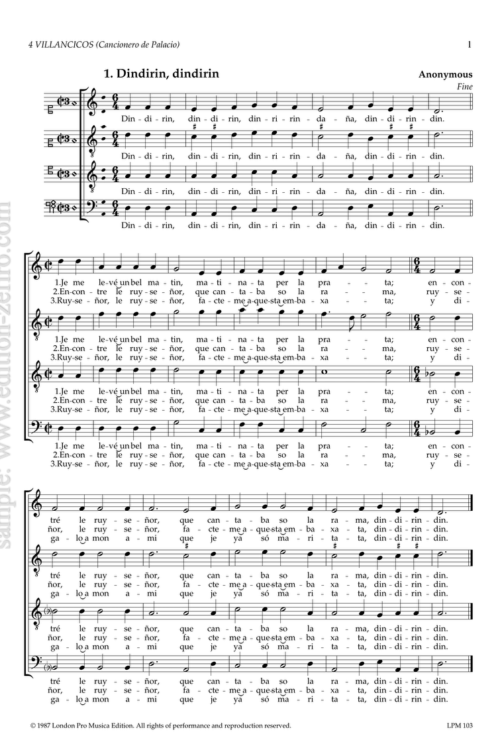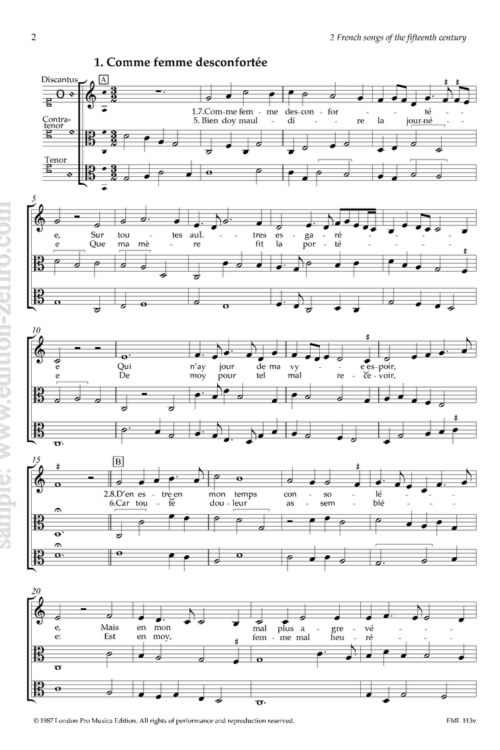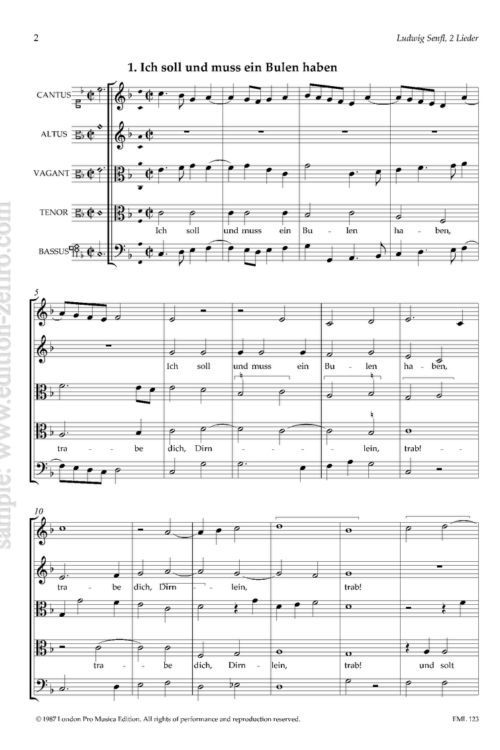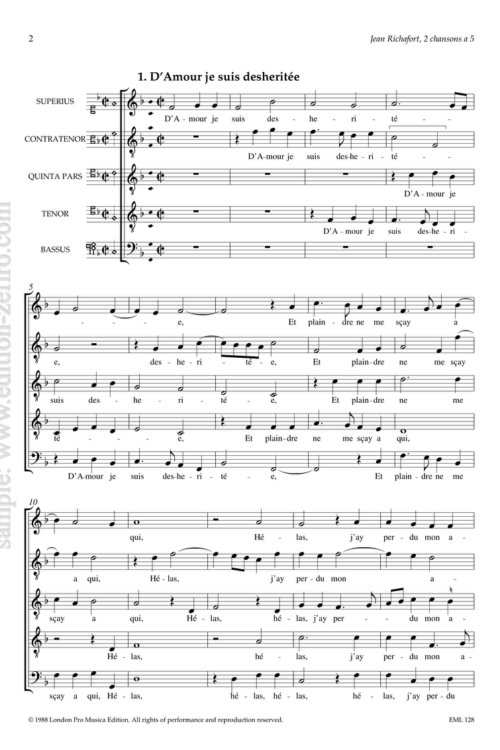Gastoldi’s excellent book of duets is very varied, and includes works by other composers. Some pieces are based on popular dance tunes.
The most immediately striking feature of Gastoldi’s collection is its variety. It is one of the earliest duo prints to make use of well-known tunes, whether it be Palestrina’s famous Vestiva i colli (no.34) 6 the same composer’s Io son ferito (33) or popular songs such as Girometta or La bella Franceschina (both in no. 7) or the popular Ger- man/Dutch dance melody Braunsmaidlein, known in Italy sometimes simply as Tedescha (no. 24)8 or the ubiquitous Spagnoletta (11).9
The use of these melodies is quite informal. It would be wrong to describe no. 34 as an “arrangement” of Vestiva i colli. It only uses fragments of the original to create an essentially new work. Another piece in the collection (no. 16) opens like Vestiva i colli, but then continues differently. It is quite unlikely that this is a quote; it is more the case of a kind of family resemblance. An analogy might be found in the pieces by Gabrieli and his imitators that are derived from, but not based on Clemens non Papa’s Frais et gaillard. That piece was extremely popular in Italy, figuring prominently in the diminution books, and surely led to a vogue for pieces in the 12th mode (Hypoionian).
There are pieces in Il primo libro that seem to be in the spirit of dance music, without actually quoting any well-known tunes. No. 9 would be a good example of this. And not surprisingly, we can detect the influence of Gastoldi’s own balletti, as in no. 2, where the opening theme is close to that of Chi guerregiar desia (L’ardito). There are many pieces in the style of the canzon da sonar, such as nos. 4, 6, 10, 13, 15, 19, 20, 25, 26, 29 etc. There are relatively few pieces in the more solemn style of the traditional ricercar, though one might be no. 28. One piece (no. 8) is based on the hexachord, a relatively unusual occurrence in the duo repertoire, though Giamberti’s collection includes several more (combined with popular tunes). No. 7 is a kind of quodlibet: the opening appears to be based on a popular tune (but one sadly so far unknown to the editor), but then goes on to quote two very popular melodies, La bella Franceschina and Girometta.






